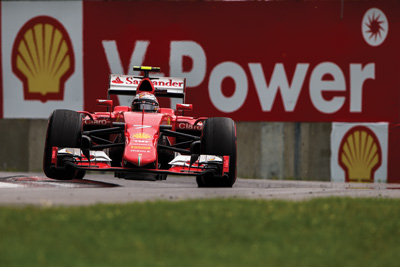Along with the advent of technology that allows sports fans to consume and discuss live events via a multitude of devices, one of the most influential trends in the sports industry over the past decade has been the rising influence of analytics.
Decisions related to scouting, player development and coaching, once made on a whim and by the gut, can now be informed by data. Through the analysis and interpretation of data, forward-thinking organizations in the NBA and MLB, in particular, feel they’ve given decision-makers throughout their organizations an edge.
A similar revolution is now occurring off the field, among marketers who allocate resources toward sports sponsorship and those who study its efficacy. Advanced, predictive analytics are now being applied in research designed to assist both the buyer and sales side of the sponsorship relationship in strategic decision-making, including decisions related to costs, returns, return on investment, and why some sponsorship relationships last longer than others.
While impression-based sponsorship valuation methods and syndicated data that allow marketers to better understand their target consumer’s preferences and habits remain important, these “sports marketing ‘Moneyball’” approaches go far beyond descriptive statistics and involve the application of multilevel modeling methods.
Next year’s Academy of Marketing Science World Marketing Congress in Paris is focused on the intersection of analytics and marketing practices that leverage consumer entertainment, and several recent research studies are reflective of this emerging trend.
 |
Recent research has shown that F1 sponsors of top-performing teams were more likely to see positive return on investment.
Photo by: GETTY IMAGES
|
In one recent project, published in the December 2014 issue of Journal of Advertising Research, my colleague Joe Cobbs and I worked with industry partners in Europe to compile five years of televised brand exposure data and costs for Formula One team sponsors. A team performance model predicted 87 percent of the variance in brand exposure for team sponsors (indicating sponsor exposure is largely a product of on-track performance), and a sponsorship ROI model demonstrated that sponsors who allocated significant resources toward top-performing teams were far more likely to achieve positive ROI.
Another of our studies, forthcoming in the journal Marketing Intelligence and Planning, used regression-based modeling to predict how much Adidas, Nike and Under Armour should be allocating toward intercollegiate athletic programs and determine whether they are overpaying or underpaying for the rights to be a school’s official apparel sponsor. The study found that given its market leadership, Nike has been able to underpay for sponsorships of several leading schools, while challengers Adidas and Under Armour have been forced to overpay to wrestle a handful of top college properties away from Nike.
A yet-unpublished project, in collaboration with Bettina Cornwell from the University of Oregon’s Warsaw Sports Marketing Center, uses event history analysis modeling to determine whether there are factors that can predict the dissolution of sponsorships. Preliminary results demonstrate that a variety of brand-related factors (including the sponsor’s level of brand equity and whether value-in-kind is allocated as part of the sponsorship), economic conditions (such as inflation within the sponsor’s home country), and sponsorship clutter (i.e., total number of sponsors) are actually statistically significant predictors of the dissolution of sponsorships of the Olympics and FIFA World Cup. For teams and leagues that depend on sponsorship revenue for survival, this research has the potential to isolate a variety of factors that should be closely monitored throughout the term of any sponsorship.
To be fair, marketing analytics are not a new concept. On the sales side, considerable strides have been made in assessing how changes in pricing influence consumer behavior. From the brand marketing perspective, multibrand conglomerates such as Kraft and Procter & Gamble have used marketing mix modeling and other advanced approaches for years to assist decision-making related to allocations in media, advertising and traditional sales promotion.
So, why weren’t these methods applied to investments in sponsorship years ago?
One theory among many is even for firms such as P&G that have invested heavily in sport sponsorship, their investments in sports marketing represent only a very small percentage of what is allocated toward measured media and other above-the-line marketing approaches (likely between 1 percent and 3 percent, at most). Given this, why would an executive task his or her most talented analysts on expenditures that are, essentially, a rounding error for a global marketing organization such as P&G?
In this publication, others have called for increased collaboration between academics and industry, and some groups, such as Nielsen and its Scarborough subsidiary, have been proactive in utilizing these relationships to benefit the industry, researchers and students. Further collaboration is essential to build upon this momentum and likely will be necessary for the application of approaches not yet applied to sport sponsorship.
As someone who has spent more than a decade advising clients in a sponsorship consulting role and is now actively engaged in research, I thought it might be helpful to conclude with a “final four” of tips for those who may be interested in collaborating on such projects:
1. Data doesn’t have to be “big”: While big data is all the rage, there is a misconception that only datasets with thousands of observations are valuable. In truth, a few hundred may be sufficient, depending on how many variables need to be investigated.
2. Longitudinal is always better: In many cases, more important than size is whether a dataset has multiple observations per subject, or is longitudinal in nature. Given that most modeling approaches are correlation-based, it is challenging to make causal inferences (i.e., determine the cause of specific effects) in the absence of longitudinal data.
3. You (and your data) can remain anonymous: It is sometimes advantageous for a data source (research firm, agency or brand) to remain anonymous throughout the process. This is usually not a problem, even if the research is published.
4. Costs are manageable: Given the inherent value of data and the challenges involved in procuring it, many researchers are open to analyzing data in return for the right to publish from it. Others pioneered mutually beneficial partnerships, whereby teams and brands provide stipends for experiential learning opportunities for students, such as traveling to corporations to present results of research. Others may require a fee, which given universities’ nonprofit status may be tax deductible.
Any way you slice it, the costs are peanuts compared with the potential value of insights that can improve corporate decision-making and could end up saving marketers a ton of dough.
Jonathan A. Jensen, Ph.D., a former director of strategic consulting at Relay Worldwide, is a sports marketing consultant and professor in the Girard School of Business at Merrimack College.





